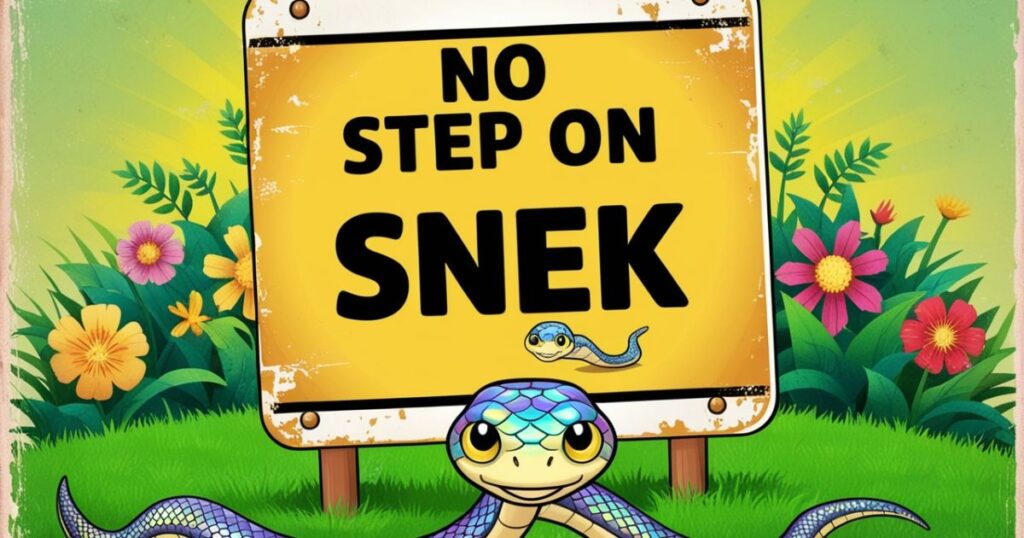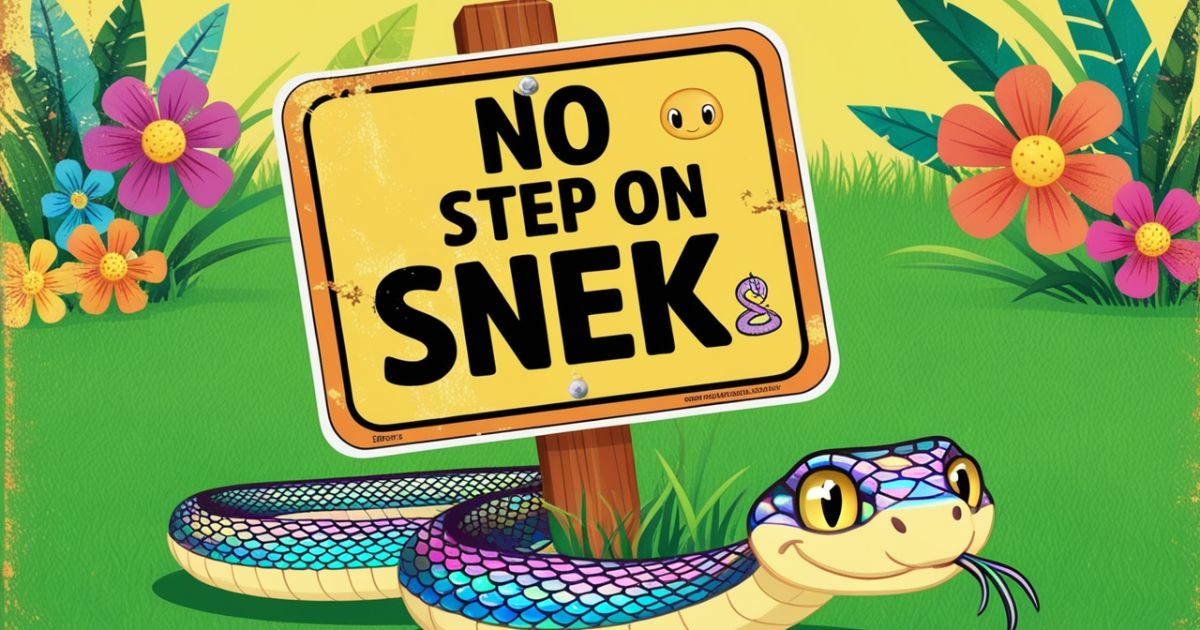A Professional Analysis of Digital Communication Trends
When navigating contemporary digital spaces, professionals may encounter seemingly nonsensical imagery featuring crude snake drawings accompanied by the phrase “no step on snek.” Understanding this phenomenon requires examining its cultural significance and evolution within modern communication frameworks.
This comprehensive analysis explores the meaning, historical development, and practical applications of this distinctive digital expression.
The Meaning of “No Step On Snek”
The phrase represents a deliberate simplification of the historical “Don’t Tread On Me” motto, traditionally associated with the Gadsden Flag. This transformation involves replacing the flag’s detailed rattlesnake imagery with rudimentary artistic representations, typically created using basic digital tools.
The original “Don’t Tread On Me” concept emerged from Benjamin Franklin’s observations regarding rattlesnake behavior, specifically their tendency to defend themselves when threatened. This evolved into a broader symbol representing resistance to governmental overreach and the protection of individual liberties.
Following the 2016 election cycle, the phrase experienced renewed political adoption, particularly among conservative movements seeking to express opposition to progressive policies. The meaning shifted from general anti-government sentiment to more targeted political resistance.
The contemporary “no step on snek” variation serves multiple communicative purposes. Some users employ it as satirical commentary, highlighting perceived extremism or lack of sophistication in political discourse. Others utilize the phrase to express vulnerability while requesting personal space, using infantilized language to appear non-threatening.
Additional interpretations include demonstrating weakness while seeking protection, where the simplified language and imagery suggest harmlessness despite the underlying request for boundaries.
Examples of “No Step On Snek”

Political organizations might ironically adopt simplified imagery rather than traditional symbols for their messaging campaigns.
Direct personal communication: “Please respect my boundaries. No step on snek, thank you.”
Digital harassment situations: “I communicated my need for space using simplified language, but the individual continued inappropriate contact.”
Satirical political commentary: “The rhetoric has become so simplified it resembles children’s communication patterns.”
Other Ways to Say “No Step On Snek”
The most direct equivalent remains “don’t tread on me,” representing the original phrase from which this variation derives. Alternative expressions include “respect my boundaries,” “maintain appropriate distance,” or more assertive warnings such as “proceed with caution” or “this is your warning.”
These alternatives maintain the underlying concept of defensive positioning while varying in tone and perceived severity. Professional contexts typically favor more formal language such as “please maintain professional boundaries” or “I require appropriate workspace respect.”
Origins of “No Step On Snek”
The foundational “Don’t Tread On Me” concept originated during revolutionary war preparations. Benjamin Franklin developed political cartoons featuring segmented snakes as metaphors for colonial territories. Christopher Gadsden, serving as lieutenant governor of South Carolina, subsequently commissioned the iconic coiled rattlesnake design to boost military morale.
The contemporary variation emerged during 2015’s political campaign season, when a simplified version featuring elementary artistic techniques and phonetic spelling appeared across digital platforms. While some sources suggest genuine child artwork inspired the image, the deliberate use of internet vernacular such as “snek” indicates intentional adult creation.
The symbol gained traction among various political factions, similar to other digital cultural markers. However, it simultaneously became a tool for political satire, with opposing groups using the imagery to critique perceived intellectual limitations or emotional immaturity in political discourse.
This dual usage pattern creates significant interpretive challenges, requiring careful consideration of context and source when encountering the symbol in professional or academic settings. Understanding the speaker’s intent demands critical analysis of surrounding communication patterns and established political affiliations.

Hello, I’m Daisy Sadie, a writer at Azaadpuns. I explore the dynamic world of puns and wordplay, delivering captivating linguistic twists that will make you laugh and groan. Join me on Azaadpuns.com for the latest in clever wordplay that makes language fun again.

